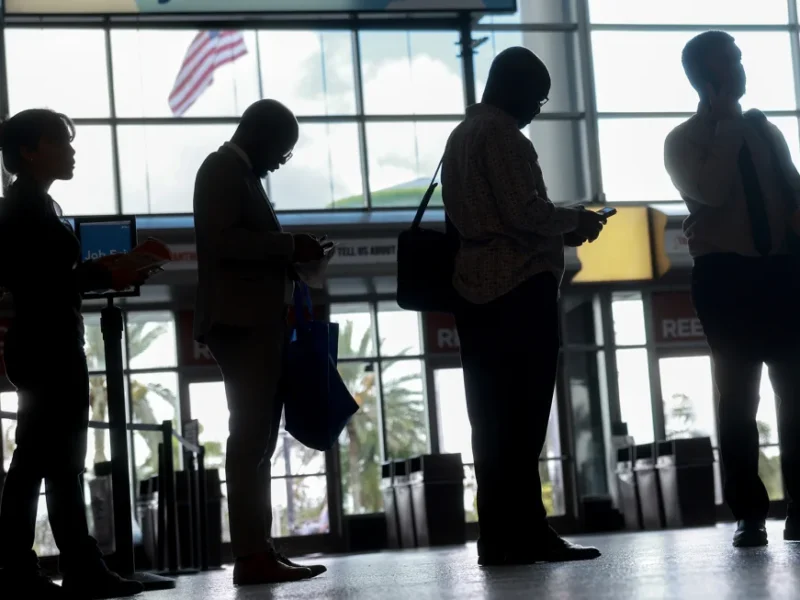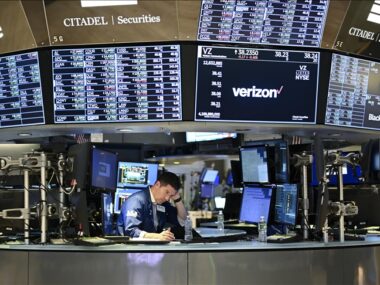The number of available jobs in the US unexpectedly increased in May, demonstrating the labor market’s ongoing strength.
Job openings rose to 8.14 million in May, up from a revised 7.91 million in April, according to the Bureau of Labor Statistics’ Job Openings and Labor Turnover Survey (JOLTS) report released Tuesday.
Economists had predicted that job openings would decrease to 7.91 million, based on FactSet consensus estimates.
Despite the volatility in job postings, the May JOLTS report marked a key milestone for the US labor market: the ratio of job openings to unemployed individuals fell to 1.22 available jobs per job seeker, matching the figure from February 2020, just before the pandemic lockdowns.
This ratio has been gradually declining since it reached a record high of 2.0 in March 2022, according to JOLTS data.
“The report was another sign that the labor market is holding firm,” said Robert Frick, corporate economist with Navy Federal Credit Union, in a statement on Tuesday. “There are no signs that job growth will slow this year, so consumer spending power will continue to rise and the economic expansion looks solid.”
The industries with the biggest increase in job openings included manufacturing (specifically durable goods) and government (federal, state, and local). Conversely, real estate and leisure and hospitality saw the largest decreases from April, according to BLS data.
The pendulum swings away from workers.
Other seasonally adjusted measures of labor turnover indicated continued stability in the US job market, which has gradually cooled recently while remaining historically strong.
The estimated number of hires increased to 5.76 million in May from 5.62 million in April. Layoffs and separations rose to 1.65 million in May, up from 1.54 million. Voluntary quits slightly increased to 3.46 million from 3.45 million.
While both the hire and job opening rates (as a percentage of total employment) rose in May, the quits rate and layoffs rate remained unchanged.
Economists have closely monitored the quits rate, which has held steady at 2.2% for seven months. This rate indicates workers’ willingness to explore new job opportunities. When people switch jobs, it often leads to significant pay raises, potentially making it harder to control inflation. However, pay raises for job switchers have significantly decreased since the “Great Resignation,” according to a new analysis from Bank of America.
Bank of America economists analyzed internal customer data and found that median wage increases are now about half of what they were during the peak of pandemic-era job changes.
In fact, median pay raises are just below 2019 levels, David Tinsley, senior economist at the Bank of America Institute, told CNN.
“People are still moving between jobs at a slightly faster rate than they were pre-pandemic, but the pay raises they’re getting when they make those moves are somewhat lower,” he said. “This suggests that the pendulum has swung slightly more in favor of firms and away from workers.”
Is the labor market steady or at a turning point?
The labor market appears to be at a crossroads, according to Nick Bunker, head of economic research at Indeed Hiring Lab, who commented on Tuesday.
“The phrase ‘little changed’ was repeated multiple times in the May JOLTS release, with nearly every key indicator showing minimal movement, either up or down,” Bunker wrote. “This short-term stability is positive, but the question remains whether this period of calm can persist or if more turbulent times are ahead.”
Bunker noted that the current level of job openings reflects a healthy, sustainable, and balanced market, but any significant declines below these levels could become concerning. He suggested that an interest rate cut might be necessary to ensure employer demand for workers doesn’t drop too much.
Federal Reserve officials generally believe the job market remains strong, allowing them to keep interest rates at a 23-year high as they wait for more evidence that inflation is under control. However, some Fed officials have noted that the job market has recently lost momentum and it is uncertain whether it will remain steady or weaken further.
“If employment starts falling apart or if the economy begins to weaken, which you’ve seen some warning signs of, you have to balance that with the progress you’re making on the price front,” Chicago Fed President Austan Goolsbee told Bloomberg TV on Tuesday during a conference hosted by the European Central Bank in Sintra, Portugal.
“The unemployment rate is still quite low, but it has been rising,” he added.
More jobs data is expected to be released this Friday.
In May, the US unemployment rate rose to 4%, a level not seen since January 2022. Despite this, job growth remained robust with an estimated net gain of 272,000 jobs.
Economists anticipate a slowdown in job gains for June. As of now, FactSet consensus estimates predict a net gain of 189,000 jobs.
First-time claims for unemployment benefits, which serve as an indicator of layoffs, have edged up in recent weeks but remain historically low compared to pre-pandemic levels.
“They’re still low historically, but they have increased between the May and June payroll survey reference periods, suggesting we could see a moderation in job growth this month,” said Marisa DiNatale, head labor economist at Moody’s Analytics, in an interview with CNN.
The Bureau of Labor Statistics will release the latest jobs report at 8:30 a.m. ET on Friday.











